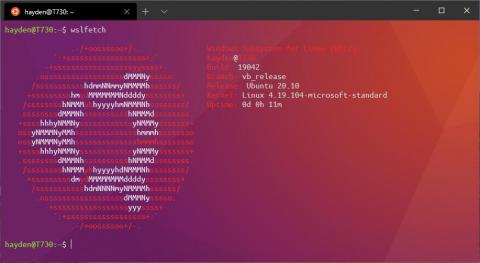Operations | Monitoring | ITSM | DevOps | Cloud
IoT
JFrog's Newest Board Member Shares Her Thoughts on DevOps, Security & IoT
IoT project lifecycle: App-centric software development [Part II]
The traditional embedded Linux development model ties applications to the OS. Such a constraint means apps have to target a specific release, which lowers development velocity. Furthermore, broken upgrades in one part of the device may affect refreshes in the rest of the OS. On the other hand, embedded developers are increasingly looking at open-source software to enable rapid app-centric software deployment and global collaboration.
Five worthy reads: Internet of Behavior-Snooping through the digital debris
Five worthy reads is a regular column on five noteworthy items we’ve discovered while researching trending and timeless topics. This week we are exploring Internet of Behavior, which can help organizations make the best decisions in providing a customized experience to customers. Design credits – Akshaya Understanding human behavior to provide the best customer experience has been a long-standing goal for marketers and organizations.
Canonical joins the Connectivity Standards Alliance
September 21st, 2022 – Canonical, the publisher of Ubuntu, announces today that it has joined the Connectivity Standards Alliance as a participant member. In this role, Canonical will help the alliance to develop open standards for the Internet of Things (IoT) and advocate for the role of open-source software in this domain. Canonical is the first company offering a major independent Linux distribution to join the alliance.
8 Real-World MQTT Use Cases
MQTT is becoming the standard protocol for applications that operate in environments where network connectivity is intermittent or unreliable, reducing bandwidth usage is a priority, or where hardware resources are limited. In this post you will learn about some specific use cases where businesses are seeing value from making MQTT part of their tech stack.
ASUS IoT and Canonical partner on Ubuntu Certification for IoT Applications
TAIPEI, Taiwan, September 14, 2022 — ASUS IoT, a global AIoT solution provider, today announced a partnership agreement with Canonical to certify the device manufacturer’s boards and systems with Ubuntu 20.04 LTS. ASUS IoT devices are used in a wide range of edge computing applications. New devices like the PE100A will be certified for optimised performance with Ubuntu, ensuring faster development times and ease of configuration.
Making the Most of MQTT - Native Collector or Telegraf?
When it comes to IoT data, MQTT is a superstar. With so many IoT devices generating data out in the world, developers need ways to access it. After all, data lies at the heart of every application. But data doesn’t just magically manifest itself into your datastore, and building the right data pipeline can make or break an application. Data collection is not a one-size-fits-all problem to solve.
A Guide to MQTT Messaging Brokers and Client Software
MQTT is a machine-to-machine communication protocol. Devices publish messages to a broker under specific topics, and other devices subscribe to those topics to receive information. It’s popular because it doesn’t take up a lot of bandwidth, so IoT devices with limited network connectivity can use it. MQTT works because of brokers. Each device sending and receiving data can communicate with potentially millions of other devices while only connecting to one broker.
TL;DR InfluxDB, the IoT Stack, and MQTT
The Internet of Things (IoT) describes devices with sensors and computational ability which let them collect, exchange, and act on data. IoT is a broad category that includes uses from smart home thermostats to industrial manufacturing equipment. Sensor data is time series data, and IoT is a common use case for InfluxDB because it can handle the huge amounts of data IoT sensors create.











